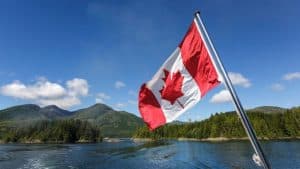“Third parties” are an endlessly fascinating topic of study for political theorists. The notion of “third party” arises in polities characterized by “first-past-the-post” voting systems, where there are usually only two major parties. Polities characterized by proportional representation (PR) voting systems, tend to have a multiplicity of parties. Particular popular attention – although scant electoral support — is given to “third parties” in the U.S. – where the “two-party” system is so strongly entrenched. Since the 1850s, with the rise of the Republican Party, there have been two main parties in the U.S. – although both of them have undergone tremendous permutations. Since that time, there has never been in U.S. politics, a “third party” which achieved the electoral breakthroughs that a considerable number of “third parties” have been able to do in Canada. It is quite fascinating to study all these “third parties”. Indeed, these “third parties” are sometimes not easily categorized as conventionally conservative or liberal. For example, the candidacies of both Ralph Nader (Green Party), and Pat Buchanan (Reform Party) in the 2000 U.S. Presidential election, had elements that could be seen as neither conventionally conservative, nor conventionally liberal. “Third parties” often amount to a salutary “shaking-up” of the political system – actually making it more truly populist.
Indeed, one of the main differences between Canada and the United States is the presence of relatively successful “third parties” in Canada. Some had argued that Preston Manning’s Reform Party – a classic “third party” – had effectively become the “first party” — as a result of the 2006 Canadian federal election. It should be stressed that the Canadian and U.S. Reform Parties were considerably different in their outlooks. However, in light of Harper’s centrist-tending policies – and his failure to win the October 19, 2015, federal election – the notion that the Conservatives were “the Reform Party – Version Three” – is indeed quite spurious. It could be argued that the Reform Party vision of Canada was already mostly defeated when Preston Manning felt compelled to broaden the party into the Canadian Alliance.

The two main parties in Canadian politics have been the Liberals (roughly corresponding to the post-1930s U.S. Democrats) and the Conservatives (roughly corresponding to twentieth-century U.S. Republicans – although rather more moderate). The Liberals in Canada were, between 1896 to 2004, considerably more electorally successful in the Canadian polity, than the U.S. Democrats in America. Ironically, in the 2011 Canadian federal election, the Liberals fell to third party status, winning only 34 of 308 seats. However, they came roaring back to power in the October 19, 2015, federal election, under the leadership of Justin Trudeau, the son of Pierre Elliott Trudeau, Canada’s left-leaning Liberal Prime Minister from 1968-1984 (except for nine months in 1979-1980). They were also able to win strong minority governments (a plurality of seats in the House of Commons) in the 2019 and 2021 federal elections. The Conservatives had changed their name to “Progressive Conservative” already in 1942. One of the ostensible reasons for the name change was to attract the support of a popular third party of the Western Canadian provinces – the Progressives.
In earlier years, there had also been such ephemeral protest parties as the UFO (United Farmers of Ontario). The Communist Party of Canada had famously won a seat in the federal Parliament in the 1940s. The federal-level Christian Heritage Party, the provincial-level Family Coalition Party in Ontario, and the Libertarian Party, have never won a sitting member in the legislatures for which they have run. There were at least two minor conservative parties running in the June 2, 2022 Ontario provincial election – the Ontario Party, and the New Blue Party. There has recently arisen Maxime Bernier’s federal-level People’s Party of Canada/Parti populaire du Canada, as well as the People’s Alliance party in New Brunswick, which won 3 seats (and was holding the balance of power) in the 2018 provincial election. In that New Brunswick election, the provincial-level Green Party was also able to win 3 seats. In the 2020 New Brunswick election, the Progressive Conservatives won a majority, so the 3 seats won by the Green Party, and the 2 seats won by the People’s Alliance party, are less important. However, the People’s Alliance party recently dissolved itself when its two parliamentary members joined the Progressive Conservatives. The Green Party is also the Official Opposition (second-largest party) in Prince Edward Island, since 2019. Two minor anti-immigration/anti-multiculturalism parties are the Cultural Action Party of Canada, and the Nationalist Party of Canada. There is also the National Citizens Alliance (formerly the National Advancement Party of Canada).
Maxime Bernier’s People’s Party of Canada won only 1.64% of the popular vote in the 2019 federal election. However, in the 2021 federal election, they won around 5% of the popular vote (over 800,000 votes), but were again unable to win a single seat.
The most prominent of the Canadian third parties was probably the Co-operative Commonwealth Federation (CCF), renamed as the New Democratic Party (NDP) in 1961. There was also the Social Credit Party (based loosely on the ideas of C. H. Douglas, who criticized big banks), which arose both in Western Canada and in Quebec – where it had a Quebec-nationalist focus. The founder of the Reform Party, Preston Manning, was the son of the longtime Alberta Social Credit Premier, Ernest C. Manning, and the accusation was sometimes made that the Reform Party were “re-tread Socreds”.
The Reform Party (co-founded in 1987 by Preston Manning) transformed itself into the Canadian Alliance (officially called the Canadian Reform-Conservative Alliance) as a result of the so-called “United Alternative” process of 1998-2000. The Canadian Alliance then merged with the federal Progressive Conservative party in December 2003, renamed together as the Conservative Party. In Canada, this federal-level party calls itself “Conservative” without the adjective – among the various provincial wings (where they exist) the name “Progressive Conservative” has usually been retained. The Conservative Party won 166 seats in the 2011 federal election. However, they fell to second place (99 seats) in the 2015 federal election. In the 2019 federal election, they won 121 seats, and were slightly ahead in the popular vote. In the 2021 federal election, they won 119 seats, and again were slightly ahead in the popular vote.

The Liberal Party of British Columbia is sometimes anomalously considered to be a centrist or even right-leaning party.
According to some observers, the triumph of the Conservative Party in 2011 (where they finally won a majority, after their minority governments of 2006 and 2008) was a belated triumph for Preston Manning. In the 1980s, the federal P.C. party was mostly hostile to so-called “small-c conservatism”. Manning’s Reform Party certainly divided the broader “right/centre-right/centre” vote, but it could be argued that it tried to introduce a salutary clarification into Canadian politics. However, the Conservative collapse in 2015 appears to have thoroughly undermined the long-time endeavour to build a true, “small-c conservative” federal party in Canada.
The re-unification of the CA and P.C. parties could only occur after Joe Clark (who had briefly been Prime Minister in 1979-1980, and the leader of the federal P.C.s from 1976-1983 and again in 1998-2003) left the leadership of the federal P.C.s. Joe Clark appeared to have played the role of a “spoiler” to the bitter twilight of his career.
But, after the merger in December 2003, the “vote-splitting” was definitely over, and, under the leadership of Stephen Harper, the Conservative Party became seriously competitive. While some have argued that the Conservatives might have won a majority already in 2004, it may be supposed that Harper had some work to do to establish his credibility with the Canadian public. He won a minority government in 2006, a strengthened minority in 2008, and finally a strong parliamentary majority in 2011. There were, however, few attempts to move in the direction of more pronounced conservatism, after that major win. So, in retrospect, there really wasn’t any kind of belated triumph for Preston Manning.
To be continued.
Mark Wegierski is a Canadian writer and historical researcher.



